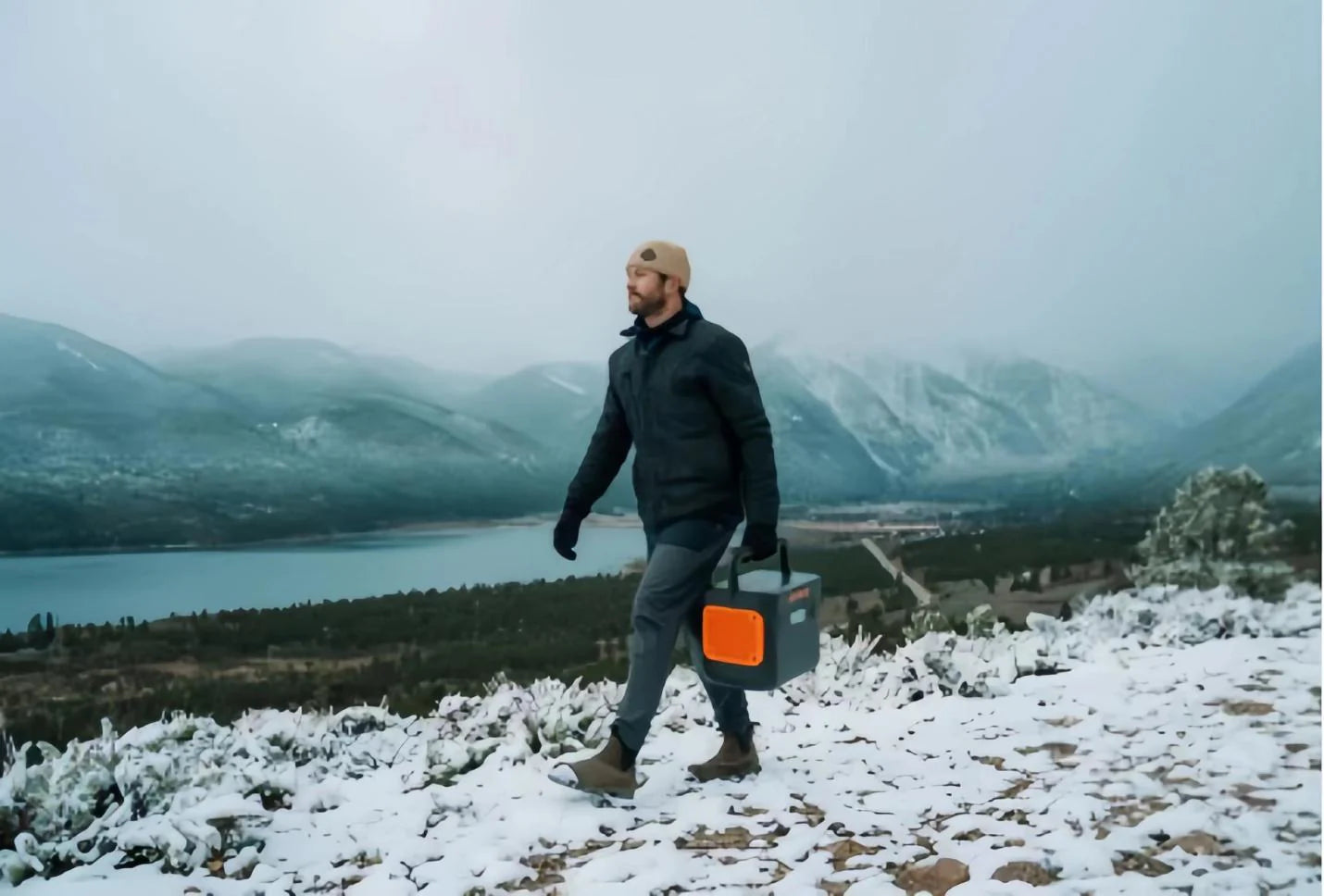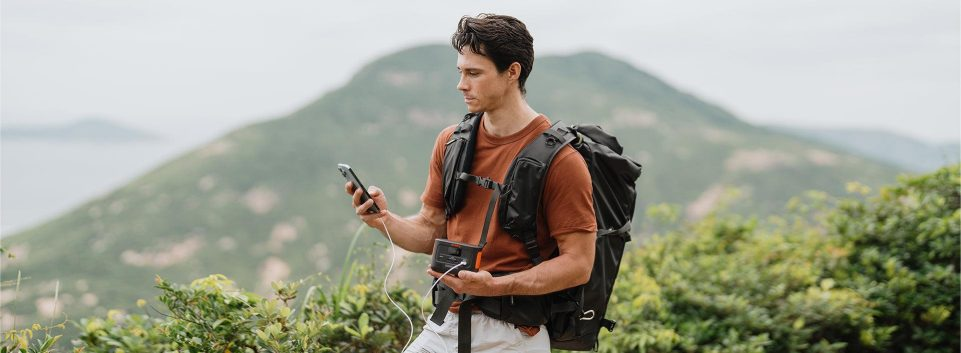Winter hiking is a very challenging outdoor activity. It tests the participants' physical strength and willpower and requires more careful equipment selection.
Whether it's the crisp air, stunning views, or peaceful countryside, winter hiking is an experience like no other. However, for most people, the joy of winter hiking also comes with a series of challenges. Thus, whether you are a novice or an experienced hiking enthusiast, consider the choice of winter hiking gear. The necessary gear can effectively resist the cold, provide anti-slip protection, and cope with emergencies.
As a nice-to-have hiking gear, the portable power supply can provide sufficient electricity for communication devices (phone, radio, satellite phone, walkie-talkie), GPS, lights, and personal electronics. The Jackery Portable Power Station is a power supply that helps you on winter hiking trips.
|
Key Takeaways: |
|
- Winter hiking gear keeps you warm, prevents slipping, and ensures safety. - When hiking in winter, add or remove clothes in time according to specific situations. - A detailed list of winter hiking gear. - When choosing winter hiking gear, you must consider weather conditions, warmth, applicability, cost-effectiveness and functionality. - Packing skills for winter hiking gear include scientific classification, waterproofing and moisture-proofing, and planning. - We recommend Jackery Explorer 300 Plus or 500 portable power stations to charge your hiking electronics with higher durability and capacity. |
Why Is Winter Hiking Gear Important?
Winter hiking is a challenging and fun activity and a test of equipment. Whether you are a novice or an experienced hiking enthusiast, you should pay attention to the selection of winter hiking equipment and be fully prepared to enjoy the fun of hiking in the ice and snow. The following are the aspects of the importance of winter hiking gear:
Warmth and Wind Protection
Winter is usually cold and rainy, and the wet and cold climate can easily lead to hypothermia, so keeping warm is the priority. The right equipment can effectively prevent the loss of body temperature and avoid frostbite. For example, high-quality waterproof jackets and pants can effectively block rain and cold wind and keep the body dry.
High-Calorie Supply
Winter hiking requires a lot of energy, so carrying enough food and drinking water is necessary. High-calorie food can quickly replenish physical strength and maintain good physical condition. In addition, prepare appropriate meals according to the hiking time, such as a light lunch, to ensure an energy supply during long hikes.
Anti-Slip and Protection
The road surface is slippery in winter, and it is easy to fall, so choosing some winter hiking gear is essential to ensure smooth hiking. For example, trekking poles can reduce the burden on the legs during winter hiking, help maintain balance, and avoid slipping.
Safety and Emergency
The outdoor environment in winter is complex and changeable, and emergencies are difficult to predict. Therefore, it is crucial to carry necessary emergency equipment. For example, a headlamp frees your hands and provides essential lighting in low visibility conditions to prevent getting lost at night.
What to Wear for Winter Hiking?
Proper clothing ensures safety and comfort when hiking in the colder months. If you wear too many layers, you may become hot and sweaty. If you don't wear enough layers, you may shiver, feel cold and uncomfortable, and, in extreme cases, suffer from hypothermia. Here are some practical tips for dressing for winter hiking.

How to Keep Your Upper Body Warm?
Dressing in multiple layers is the primary way to warm your upper body in winter.
Underwear: Choose underwear made of quick-drying materials (such as polyester) to wick away sweat and keep your skin dry quickly. Avoid wearing cotton clothes, as cotton absorbs water and does not dry well, making your body feel cold.
Warmth Layer: Choose a fleece, wool sweater or light-down jacket for the middle layer.
Protection Layer: Wear a windproof and waterproof jacket. Jackets can effectively block cold wind, rain and snow from the outside.
How Do You Keep Your Lower Body Warm?
For winter hiking, wearing two pairs of pants is recommended, with quick-drying pants as the inner layer and soft-shell pants or jacket pants as the outer layer. In addition, knee pads can provide additional protection and warmth.
How to Keep Your Foot Warm?
Please choose high-top, waterproof hiking shoes to ensure your feet are dry and warm. The soles of the shoes should have good anti-slip properties to prevent slipping on snow and ice. In addition, wearing thick wool socks can keep warm and prevent blisters.
How to Keep Your Head and Hands Warm?
First, it is recommended that you choose a wool or fleece hat with good thermal insulation performance that can cover the ears. Secondly, a face guard or magic bandana can protect the face from frostbite in freezing weather. Finally, choose warm and waterproof gloves.
Tips for Winter Hiking Clothing
Try to choose lightweight clothing to reduce the burden and improve hiking comfort. In icy conditions, you can stick a heat pack on key parts (such as the soles of the feet and waist) to provide additional heat. In addition, clothing should be added or removed as weather and activity levels change to avoid hypothermia after sweating.
The Ultimate Winter Hiking Gear Checklist
Winter hiking is a physical exercise and an incredible journey of close contact with nature. In the snowy world, every step is full of unknowns and surprises. However, the severe cold weather and complex environment challenge hikers. Therefore, preparing the equipment can ensure you can enjoy natural beauty safely and comfortably in the severe cold. The following is a detailed list of winter hiking gear.

A. Mountaineering Bag or Backpack
Choose a mountaineering bag of appropriate size according to the time and route of winter hiking to ensure that all equipment can be carried appropriately. High-quality mountaineering bags adopt ergonomic designs and wear-resistant fabrics, with multiple storage spaces and comfortable carrying systems, providing hikers with a convenient equipment-carrying experience.
B. Wearing Equipment
While winter hiking brings a unique experience of beautiful scenery, it also puts higher requirements on clothing. The following are the clothes you need to get for winter hiking:
Quick-Drying Underwear: quick-drying underwear made of fibre
Warm Clothing: wool sweaters, fleece clothes
Outerwear: jackets, down jackets
Pants: ski pants
Shoes: waterproof hiking shoes, mountaineering shoes
Socks: wool socks (warm and breathable), synthetic socks (quick moisture absorption and perspiration)
Accessories: gloves, hats, scarves, earmuffs and other additional warm equipment.
C. Camping Equipment
The following are the camping equipment you may need to bring for winter hiking:
Tents: Choose a four-season tent with good windproof and warm performance, such as a double-layer tent with a snow skirt, which can effectively prevent wind and keep warm.
Sleeping Bag: Choose a high-loft down sleeping bag and use it with a moisture-proof mat.
Moisture-Proof Mat: To effectively isolate the ground cold, use an inflatable or foam mat with a high R-value.
Warm Blanket: It can be used as a tent mat, picnic mat or emergency survival blanket to improve warmth.
Heating Equipment: Bring a kerosene heater or a portable gas stove to heat the tent and boil water for cooking, keeping the camp warm and comfortable.
D. Food and Water
The following are the energy-replenishing equipment you need to bring for winter hiking:
High-Calorie Food: Bring high-calorie, easy-to-carry food such as compressed biscuits, chocolate, beef jerky, canned luncheon meat, etc.
Sufficient Drinking Water: Even in cold environments, it is essential to stay hydrated.
Insulated Water Bottle: High-quality water bottles are made of stainless steel and vacuum insulation technology, which can maintain water temperature for a long time and keep you warm in cold environments.
Personal Water Filter: Ensure a clean water source is available in the wild.
Sports Drinks: Replenish sugar and electrolytes to maintain physical strength.
E. Safety Equipment
In addition to the necessary clothes and shoes, some essential accessories can enhance your winter hiking experience and ensure your safety:
Trekking Poles can provide additional stability and balance on slippery or uneven terrain, help distribute weight, and reduce pressure on knees and joints.
Crampons or Snow Grommets: Crampons are made of high-quality steel, which is strong and durable. They can be easily installed on hiking shoes to provide stable walking protection. Snow grommets use waterproof fabric and a tightening design to tightly fit shoes and trouser legs to prevent snow from entering.
Sunglasses or Snow Goggles: Please choose sunglasses or sunglasses with UV protection.
Sunscreen: Even in winter, the sun's rays can be intense, so please apply sunscreen on exposed skin.
F. Emergency Equipment
The following is the emergency equipment you need to carry for winter hiking:
Lighting Equipment: When walking in low light or at night, lighting tools such as headlights and flashlights can provide necessary lighting.
First Aid Kit: Basic first aid supplies (bandages, disinfectants, Band-Aids, etc.) for emergencies.
Maps and Compasses: High-quality maps and compasses have clear markings and accurate pointing functions, which can help hikers accurately determine the direction in complex terrain.
Portable Power Station: Provide backup power for electronic equipment to ensure regular communication and navigation equipment use. A portable power station should be one of the most essential things in your survival kit for hiking, camping, or spending some time away from the power grid.

What are your plans if your phone dies and you need to call 999? What are your plans for returning to where you're going in the dark woods late at night when your torch gives out? It's not possible. That is unless you have a way to keep those things lit up. This is where a power station comes in.
Jackery Portable Power Station is ideal for winter hiking since it is small, lighter, and stronger. You can quickly put it in your backpack and recharge it with Jackery Solar Panels on sunny days. If you plan overnight hiking trips, this could be a lifesaver for powering your light, phone, GPS device, and more.
|
The Ultimate Winter Hiking Gear List |
|
|
Mountaineering Bag / Backpack |
|
|
Wearing Equipment |
Quick-drying underwear Warm clothing (wool sweaters, fleece clothes) Outerwear (jackets, down jackets) Ski pants Waterproof hiking shoes / Mountaineering shoes Wool socks, synthetic socks Accessories (gloves, hats, scarves, earmuffs) |
|
Camping Equipment |
Tents Sleeping bag Moisture-proof mat Warm blanket Heating equipment (kerosene heater / portable gas stove) |
|
Food and Water |
High-calorie food Sufficient drinking water Insulated water bottle Personal water filter Sports drinks |
|
Safety Equipment |
Trekking poles Crampons/snow grommet Sunglasses/snow goggles Sunscreen |
|
Emergency Equipment |
Lighting equipment (headlights and flashlights) First aid kit Maps and compasses Portable power station |
In short, although winter hiking is full of challenges, reasonable equipment preparation can significantly improve the experience and ensure safety. In addition, be sure to check the integrity of winter hiking gear before departure and adjust the items you carry according to the weather forecast.
Jackery Portable Power Stations for Winter Hiking
A hiking portable power station is a small, light gadget that saves power to charge your electronics when there isn't an outlet nearby. It takes AC and DC currents from a wall outlet, solar panels, or a car's battery and stores them in a battery that is small, portable, and easy to keep.
A good power station, like Jackery Portable Power Station, quickly provides enough power to keep almost any gadget running, even in the middle of nowhere. It should be able to charge several things simultaneously and have a long-lasting battery.
Jackery takes pride in offering unparalleled power stations and charging solutions tailored to meet diverse individual requirements, whether for a three-day solo hike or a two-week family camping trip in the wilderness.
Jackery Explorer 500
The Jackery Explorer 500 is an ideal small generator that won't take up much space in your backpack. It is the size of a basketball and weighs 13.3 pounds (6 kg), making it perfect for winter hiking. It has a 500W power source (1000W surge) and a 518Wh battery capacity. It also has several output ports that can run multiple devices simultaneously. Here are some of the features that the Jackery Explorer 500 have:

• Power and Capacity: The power source is 500W (1000W surge peak), and the battery can hold 518Wh.
• Charging Ports and Times: There are three charging ports, one for solar charging (9.5 hours with 1 Jackery SolarSaga 100W solar panel), one for AC charging (7.5 hours), and one for car charging (8 hours).
• Compatibility: It powers standard tools and small appliances, such as laptops, projectors, smartphones, space heaters, toasters, and more. You don't have to worry about problems with widely used devices.
• Safety: The Battery Management System (BMS), which is the best in its class, ensures that skiing is a breeze. 500 cycles at 80% or more of full capacity. 14-104°F (Jackery Explorer 500 Portable Power Station) and 14-149°F (Jackery SolarSaga Solar Panels).
• Multiple Ports: one AC (500W) output, two DC (12V, 7A) outputs, one garage (12V, 10A), three USB-A (5V, 2.4A) outputs, one AC input, and one DC input.
The following are the working hours for using Jackery Explorer 500 (518Wh) to charge winter hiking electronics and devices:
|
Winter Hiking Electronics |
Working Hours |
|
Walkie Talkie (70W) |
5.9H |
|
Headlamp (30W) |
13.8H |
|
Phone (27W) |
15.3H |
|
Camera (10W) |
41.4H |
|
GPS Device (60W) |
6.9H |
(*The working hours are only for reference; the actual working hours depend on your usage.)
Jackery Explorer 300 Plus
Compared to the Explorer 500, the Explorer 300 Plus has a different battery cell (LiFePO4), which can stand more in harsh weather conditions and last longer in a small size. Besides, it is smaller and lighter than Explorer 500, weighing only 3.75 kg, enabling easy portability anywhere you hike. Learn more features of Explorer 300 Plus:

• Charge 4 Devices at Once: The Explorer 300 Plus is a portable power station featuring a 300W AC Pure Sine Wave Inverter (600W Surge Peak) and 288Wh capacity. It can charge up to four devices concurrently, facilitated by one AC, USB-A, and USB-C output, enabling rapid and effortless charging of several appliances.
• Multiple Recharging Ways: The MPPT technique guarantees 99% efficiency in solar charging. A complete wall charge requires 2 hours, whereas solar charging with a single SolarSaga 200W panel necessitates 4 hours. With car charging capabilities, concerns over power disruptions will be alleviated.
• ChargeShield Protection: Jackery's ChargeShield fast charge technology pioneers the market by employing a stepped variable-speed charging algorithm, thereby improving safety and extending battery pack lifespan by 50%. At a temperature of 45℃, the power station can achieve full charge in around 2 hours.
The following are the working hours for using Jackery Explorer 300 Plus (288Wh) to charge winter hiking electronics and devices:
|
Winter Hiking Electronics |
Working Hours |
|
Walkie Talkie (70W) |
3.3H |
|
Headlamp (30W) |
7.7H |
|
Phone (27W) |
8.5H |
|
Camera (10W) |
23H |
|
GPS Device (60W) |
3.8H |
(*The working hours are only for reference; the actual working hours depend on your usage.)
Tips for Choosing Winter Hiking Gear
When choosing winter hiking gear, you should consider weather conditions, warmth, and applicability. Here are tips for choosing winter hiking gear:
Tip 1: Consider Weather Conditions
The biting cold wind will quickly drain body heat, presenting a challenge to winter hikers, so choosing equipment with good windproof performance is crucial.
Tip 2: Pay Attention to Warmth
Winter hiking is a very challenging outdoor activity. It tests the participants' physical strength and willpower and places higher requirements on selecting hiking equipment. Winter hiking gear usually keeps warm, prevents wind, prevents slipping, replenishes energy, and ensures safety.
Tip 3: Notice the Applicability
Different types of hiking require significantly different equipment. For example, long-distance winter hiking requires lightweight equipment to reduce the burden on the body. For short-distance hiking, relatively thick equipment can be selected to provide warmth and protection.
Tip 4: Ensure Functional Details
When choosing winter hiking equipment, design details cannot be ignored. For example, multifunctional equipment can better adapt to different weather and environments and improve hiking's adaptability.
Tip 5: Weigh the Cost-Effectiveness
Well-known brands usually mean better quality and after-sales service for winter hiking equipment, but higher prices often accompany them. In addition, you can also find some affordable equipment in the second-hand market. However, it should be noted that you should be cautious when buying second-hand equipment to ensure its reliability and safety.

Tips for Packing Winter Hiking Gear
Winter hiking is a test of physical strength and willpower and a challenge to equipment packing skills. Here are some packing tips for winter hiking gear:
Tip 1: Scientific classification and reasonable placement.
Before packing, classify all equipment according to frequency of use and weight. For example, commonly used items such as raincoats, headlamps, light meals on the road, and paper towels should be placed near the zipper or in the side pocket. Infrequently used items such as sleeping bags and spare clothes should be placed at the bottom of the bag.
Tip 2: Maximize the use of space.
Use compression bags to compact clothes, sleeping bags, etc., to save space to the maximum extent. The compressed equipment not only becomes smaller in size but also avoids moisture. Digital products can be classified and put into small waterproof bags, spoons, etc., stored in larger pots, and then the gaps can be filled with soft food.
Tip 3: Waterproof and moisture-proof.
Winter weather is changeable, and waterproof measures are essential. Therefore, please put all items afraid of moisture, such as digital products and clothes, into waterproof bags to ensure they remain dry in rainy and snowy weather. After removing food from its original packaging, store it in large sealed bags to prevent it from getting damp or contaminating each other.
Tip 4: Plan and adjust flexibly.
Plan the equipment and clothing needed for each day in advance according to the hiking route and weather conditions. You can adjust the equipment you need to bring every day before departure. After the final packing is completed, secure everything.
Tip 5: Final inspection.
After packing, put the backpack on the ground to check whether its appearance is neat, the centre of gravity is stable, and the two sides are balanced. Then, try to carry it to feel whether the centre of gravity is in the correct position to avoid the backpack being too high or too low.
Winter Hiking Gear FAQs
The following are the frequently asked questions about winter hiking gear in the UK:
1. What gear is needed for winter hiking?
Winter hiking gear helps you stay warm, dry, comfortable, and safe while hiking in cold weather. By preparing the right gear, you can enjoy winter hiking no matter the weather.
Warm clothing
Camping equipment (if necessary): Camping equipment usually includes tents, sleeping bags, moisture-proof mats, heating equipment, etc.
Safety equipment: Trekking poles, crampons or snow gaiters, sunglasses or snow goggles, sunscreen, and other safety equipment are also necessary when hiking in winter.
Emergency equipment: lighting equipment, first aid kit, map and compass, portable power station, etc.
2. How many layers for winter hiking?
Three layers are generally recommended for winter hiking.
The inner layer helps to wick moisture (sweat) away from the skin.
The middle layer traps your body heat in the air space inside the fabric.
The outer layers should be windproof and waterproof.
With the right layering system, you can stay warm, dry and safe in the cold.
3. How do you choose anti-slip gear for winter hiking?
Winter hiking often involves slippery roads and icy terrain. The right anti-chemical gear is essential to ensure safety.
Microspikes are rubber straps that secure the boots. They have metal chains with small spikes at the foot and are suitable for snow and ice.
Crampons are attached to the boots using a pull-on, strap-on or hybrid design and are made of metal with long, sharp spikes. Crampons provide excellent traction on snow, ice and steep slopes.
Final Thoughts
Low temperatures and challenging conditions make winter hiking gear selection particularly important. Venturing outdoors during the colder months requires proper preparation and the right winter hiking gear to ensure a safe and enjoyable adventure. To sum up, each piece of winter hiking gear plays an integral role and is an indispensable safeguard for every hiking enthusiast.

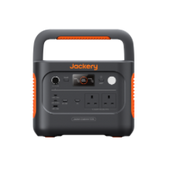
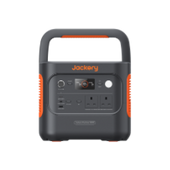

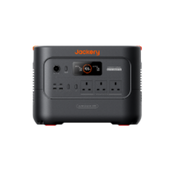
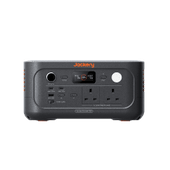
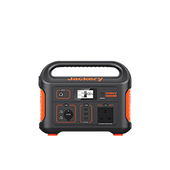
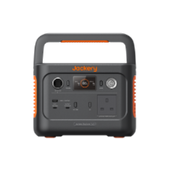
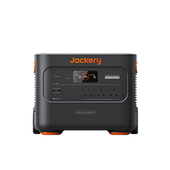
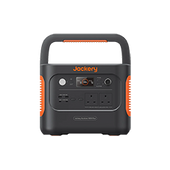
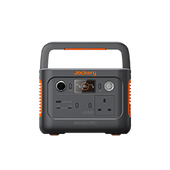
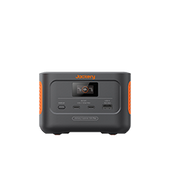
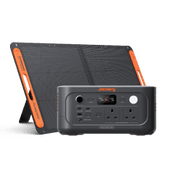
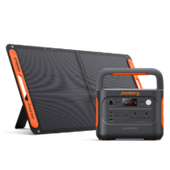
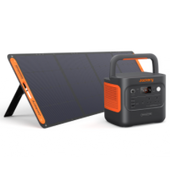
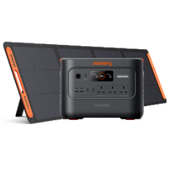
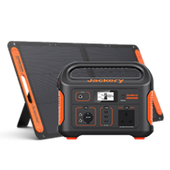
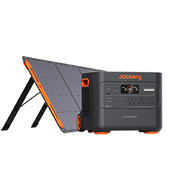
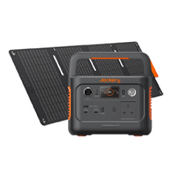
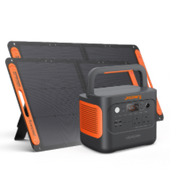
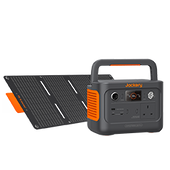



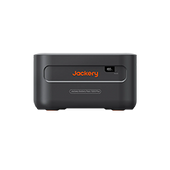

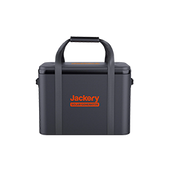
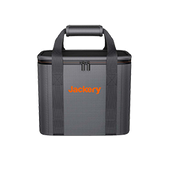
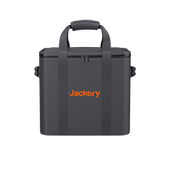
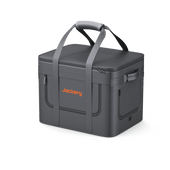
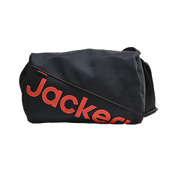

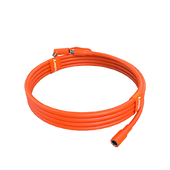
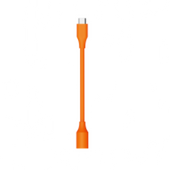
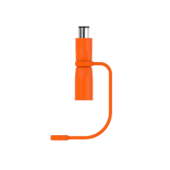


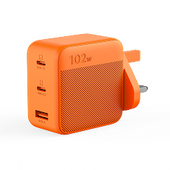

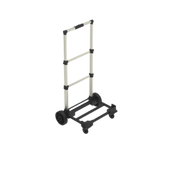
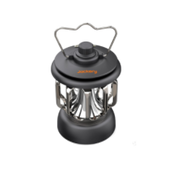


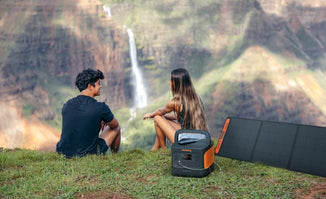
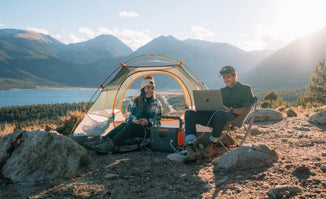






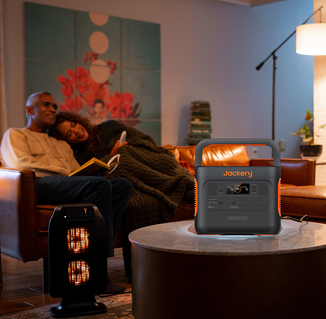








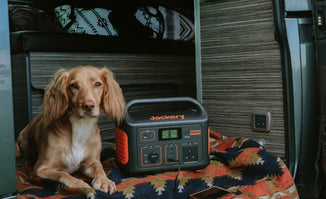
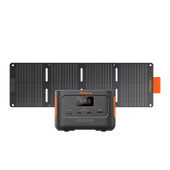

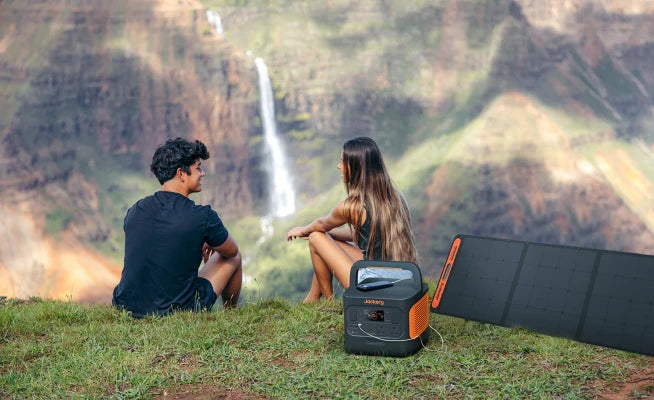
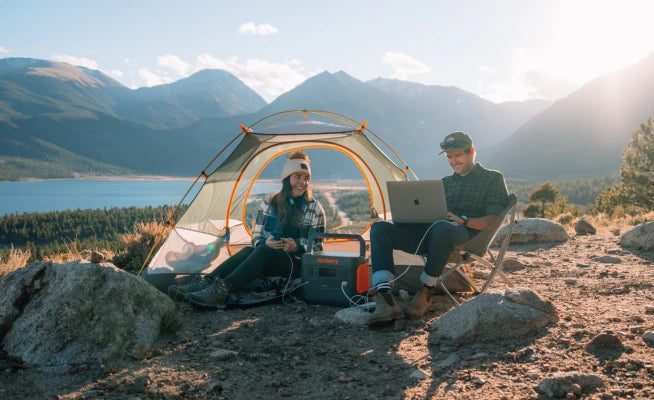





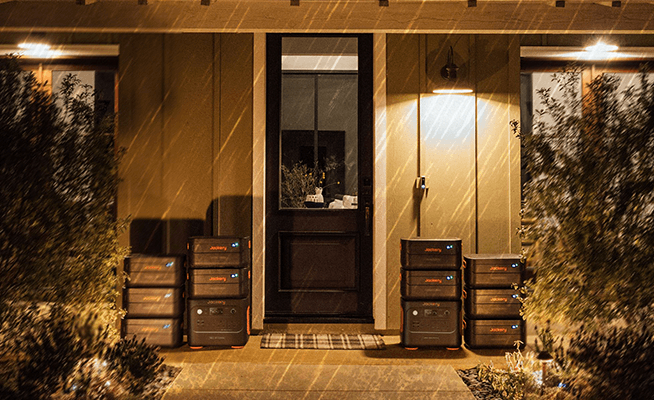
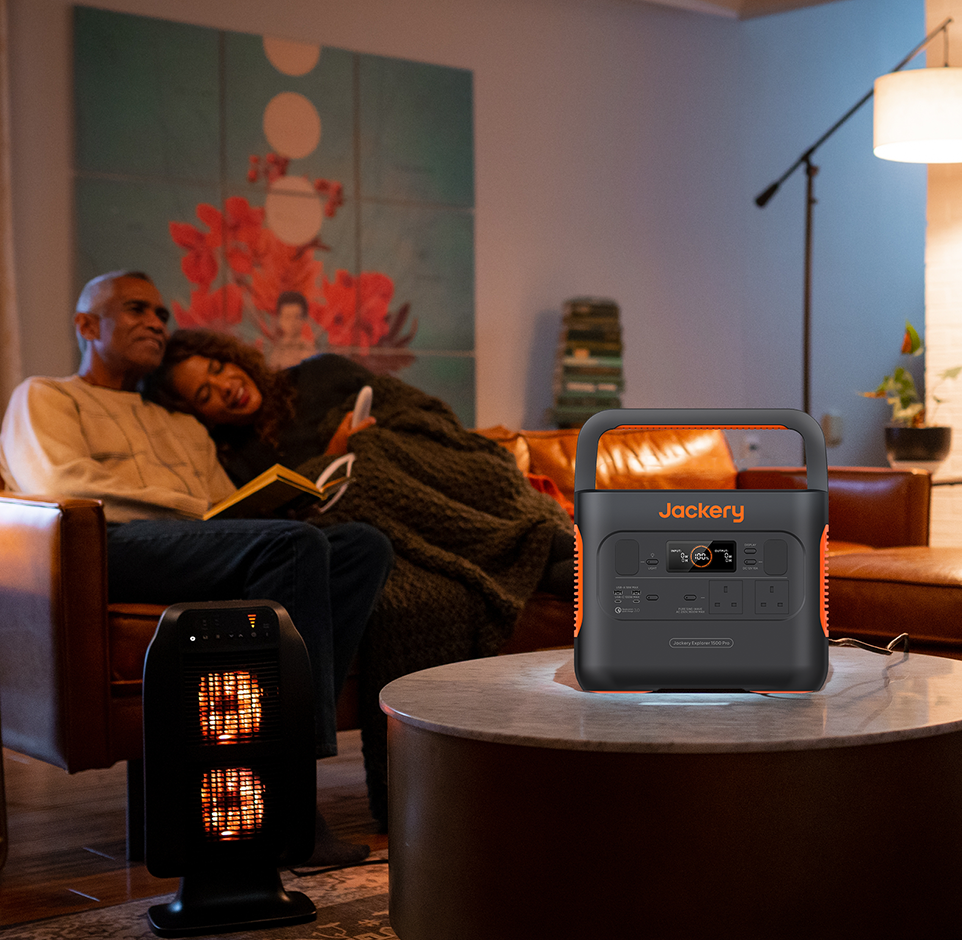








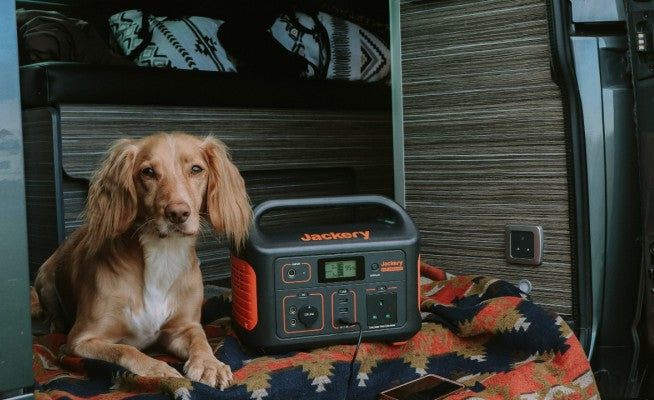






![The Ultimate Winter Hiking Gear Checklist [PDF Download]](http://uk.jackery.com/cdn/shop/articles/winter_hiking_gear_guide_75e472ac-da75-4eb6-92ea-886113a67d7b.png?v=1738981995)




